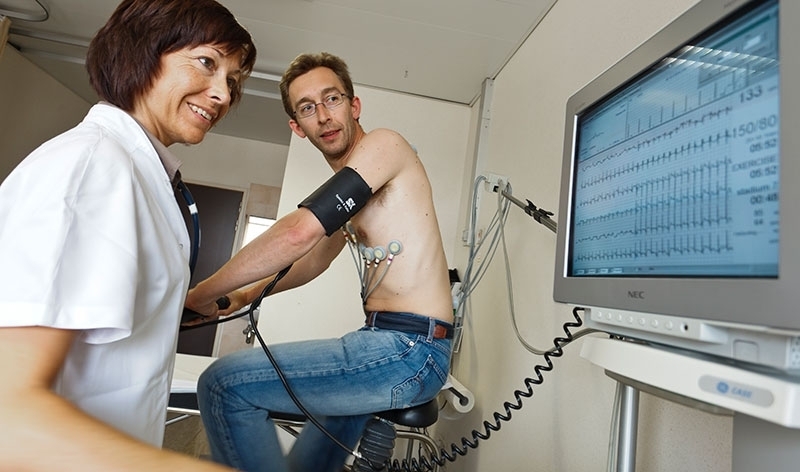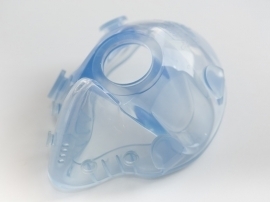Ergospirometry
What is it?
What is it?Participants in the Cardiac Rehabilitation Programme are subjected to a cycling test where the patient is wearing a mask, at the start and on completion of the programme. This enables us to analyse the gas exchange during breathing. The test is a useful addition when determining exercise capacity and physical fitness. The test can also be useful for people who play sports intensively.
What is the process?
What is the process?Preparation
No specific preparations are required. Make sure you wear comfortable clothes and shoes that allow for easy movement.


Test
Ergospirometry is carried out in the same way as a regular cycling test. Electrodes are attached to the upper body to record an electrocardiogram. To allow for the analysis of the respiratory gases, a mask is placed over the nose and mouth. The mask is fitted tightly so that any air leaks are eliminated. A clip is placed on a fingertip to measure the oxygen level in the blood.
For the actual test, you will be asked to take a deep breath in and a deep breath out, just like you would when blowing out the candles on a cake. This enables us to measure lung capacity. The effort level is increased gradually by increasing the cycle resistance. You will be asked to talk as little as possible to avoid disturbing the gas exchange analysis. Please tell the cardiologist or nurse if you are unable to cycle any further.
The duration of the test is partially dependent on your age and condition.
Aftercare
No specific aftercare is required.
What are the risks?
What are the risks?The test is carried out under continuous blood monitoring and electrocardiogram. Serious complications are extremely rare.
Possible complaints that may occur during the test are:
- chest pain (a result of lack of oxygen in the heart muscle due to a constriction of the coronary artery). In this case, the test is usually stopped and the symptoms disappear by themselves. If the symptoms persist, your physician can give you medication to alleviate them.
- Sometimes, heart rhythm disturbances can occur that usually disappear by themselves. Equipment and medication to treat any potential heart rhythm disturbances are always available.
Results
ResultsThe cardiologist will discuss the test results immediately after the procedure. Special attention is paid to exercise capacity (measured in Watt) and maximum oxygen uptake capacity. These data are also communicated to the physical therapists at the Cardiac Rehabilitation Department. They can use the data to adapt the training to your level better.
Centres and specialist areas
Centres and specialist areas
Latest publication date: 13/12/2023
Supervising author: Dr Provenier Frank




